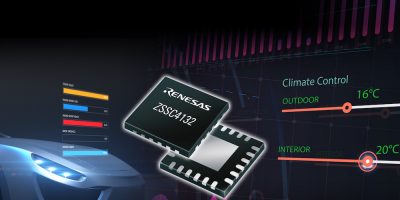Automotive speech synthesis ICs in the ML2253x series are optimised for audible notifications and sound effects in advanced driver assistance system (ADAS) and acoustic vehicle alerting system (AVAS).
The ML2253x speech synthesis ICs can reduce overall system costs and simplify hardware and software design, says Rohm.
The IC uses the HQ-ADPCM compression method, claimed to provide superior audio playback with reduced memory usage for storing audio data.
The integrated sound continuity detection re-digitises the analogue speaker output signal and compares it with the playback data stored in the internal or external memory. The main microcontroller receives a feedback in case the data is exceeding a pre-defined value e.g. in case of skipping.
The IC has detection functions built in, including short-circuit, high temperature, and command transfer error detection, improving reliability in automotive applications, says Rohm.
The memory content can be updated through the main microcontroller, once connected to a communication network, such as the IoT.
Lapis Semiconductor offers the SDCK3 development tool that allows users to create voice data as well as prepare, write, and listen to ROM data stored in the speech synthesis IC. Combining SDCK3 with an optional reference board enables both hardware and software to be evaluated.
Rohm Semiconductor develops and manufactures a large product range from the low power microcontroller, power management, standard ICs, SiC diodes, MOSFETs and modules, power transistors and diodes, LEDs to passives components such as resistors, tantalum capacitors and LED display units.
Production is at manufacturing plants in Japan, Korea, Malaysia, Thailand, the Philippines and China.
Lapis Semiconductor (former OKI Semiconductor), SiCrystal GmbH and Kionix are companies of the Rohm Semiconductor Group.
Rohm Semiconductor Europe has its head office near Dusseldorf on Germany, serving Europe, Middle East and Africa (EMEA).







